MoMA Showcases Eight New Films in Exhibition of Foreign Language Cinema  From 'Postales de Leningrado' (Postcards from Leningrad), Venezuela, 2007. |
"
MoMA Showcases Eight New Films in Exhibition of Foreign Language Cinema  From 'Postales de Leningrado' (Postcards from Leningrad), Venezuela, 2007. |
"
MoMA Showcases Eight New Films in Exhibition of Foreign Language Cinema

Fernado Botero
Activist ListenersNiels Van Tomme October 29, 2009Editor: John Feffer | |||
| |||
|
Rags Media Collective

 In 1962, late in his career, kiddie comics master John Stanley briefly turned his hand to the horror genre. The indispensable Stanley Stories blog has lately been posting his strips from Ghost Stories and Tales from the Tomb in their entirety. The typically incisive commentary over there covers much of what I would want to say about these, frankly, kind-of-insane comics, so I urge you to click through.
In 1962, late in his career, kiddie comics master John Stanley briefly turned his hand to the horror genre. The indispensable Stanley Stories blog has lately been posting his strips from Ghost Stories and Tales from the Tomb in their entirety. The typically incisive commentary over there covers much of what I would want to say about these, frankly, kind-of-insane comics, so I urge you to click through. These ghost stories are another order of spooky altogether, the kind that confounds expectation, logic, and often comprehension. Stanley’s uncredited collaborators stiffly delineate these dreamlike tales, and though the results are sometimes crude, they are always very far from inept. Underlying every panel and every page is Stanley’s visual sophistication, which grants even the most wooden or unpracticed renditions the stark and primal quality of nightmare.
These ghost stories are another order of spooky altogether, the kind that confounds expectation, logic, and often comprehension. Stanley’s uncredited collaborators stiffly delineate these dreamlike tales, and though the results are sometimes crude, they are always very far from inept. Underlying every panel and every page is Stanley’s visual sophistication, which grants even the most wooden or unpracticed renditions the stark and primal quality of nightmare.
 Six issues of Skull appeared between 1970 and 1972. Gary Arlington, proprietor of the renowned San Francisco Comic Book Company, came up with the bare bones idea for a horror anthology in the EC tradition; artist Greg Irons fleshed it out, and underground comics had another addition to its onslaught of horror books. Most of Skull featured the grim crosshatching grotesquerie of Irons and Jack Jackson, as well as the first UG work from the smooth and heavy metal-friendly pen of Richard Corben, among others. Some less out-and-out examples of the genre formed part of the scene, too, though I’m less familiar with them, having only caught the barest glimpses of Slow Death, or Insect Fear or, most tantalisingly, the gruesome cute brut of Rory Hayes’s Bogeyman (send in your unwanted copies c/o The Walrus).
Six issues of Skull appeared between 1970 and 1972. Gary Arlington, proprietor of the renowned San Francisco Comic Book Company, came up with the bare bones idea for a horror anthology in the EC tradition; artist Greg Irons fleshed it out, and underground comics had another addition to its onslaught of horror books. Most of Skull featured the grim crosshatching grotesquerie of Irons and Jack Jackson, as well as the first UG work from the smooth and heavy metal-friendly pen of Richard Corben, among others. Some less out-and-out examples of the genre formed part of the scene, too, though I’m less familiar with them, having only caught the barest glimpses of Slow Death, or Insect Fear or, most tantalisingly, the gruesome cute brut of Rory Hayes’s Bogeyman (send in your unwanted copies c/o The Walrus).
 In the 1980s, having helped redefine monster comics as part of the all-star Swamp Thing team (who, if you’re wondering, had nothing to do with the film), artist Steve Bissette had yet further services to perform in his favoured genre. Determined to continue setting an example for seriousness in horror comics, rather than uphold the cheesy old punch-pulling norm, Bissette cofounded and edited a series called Taboo. The books were thick tomes rather than floppy pamphlets, whose bold conception was on occasion actually matched by the capabilities of their contributors. Taboo’s publication history is fascinating and convoluted and depressing, tied as it is to the various industry implosions of the time. The result of this tortuous past is that the series is a record of projects interrupted, delayed, or left unfinished. Alan Moore and Eddie Campbell’s Jack the Ripper saga From Hell concluded elsewhere, for instance, as did both the Moore-written porno epic Lost Girls and Jeff Nicholson’s Through the Habitrails, a sort of anti-Dilbert.
In the 1980s, having helped redefine monster comics as part of the all-star Swamp Thing team (who, if you’re wondering, had nothing to do with the film), artist Steve Bissette had yet further services to perform in his favoured genre. Determined to continue setting an example for seriousness in horror comics, rather than uphold the cheesy old punch-pulling norm, Bissette cofounded and edited a series called Taboo. The books were thick tomes rather than floppy pamphlets, whose bold conception was on occasion actually matched by the capabilities of their contributors. Taboo’s publication history is fascinating and convoluted and depressing, tied as it is to the various industry implosions of the time. The result of this tortuous past is that the series is a record of projects interrupted, delayed, or left unfinished. Alan Moore and Eddie Campbell’s Jack the Ripper saga From Hell concluded elsewhere, for instance, as did both the Moore-written porno epic Lost Girls and Jeff Nicholson’s Through the Habitrails, a sort of anti-Dilbert.All Hallows’ Sheaves
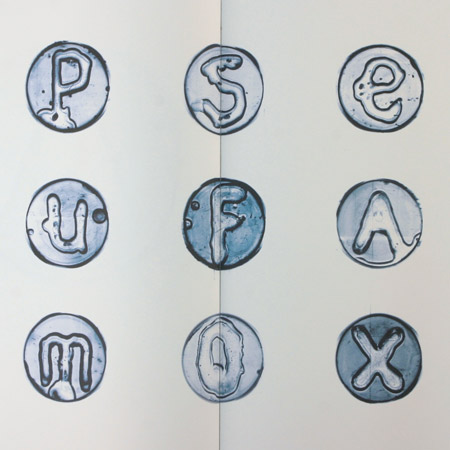
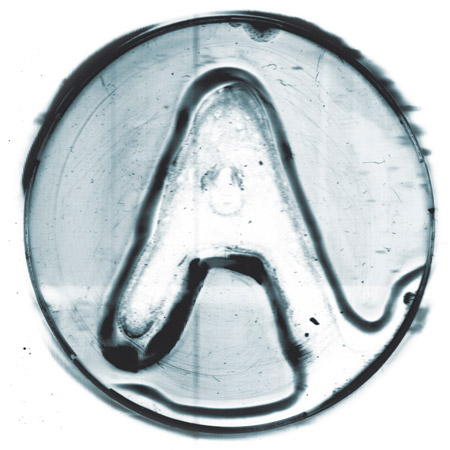
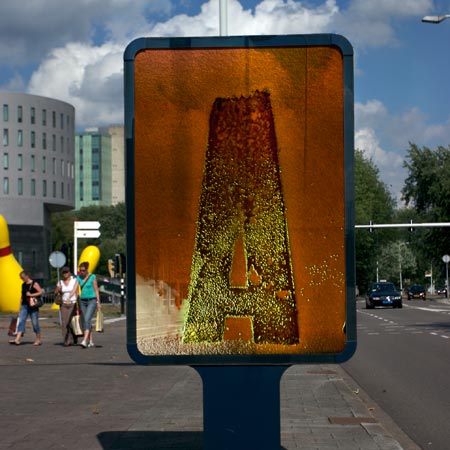

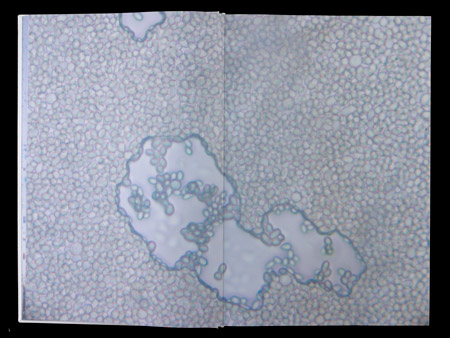
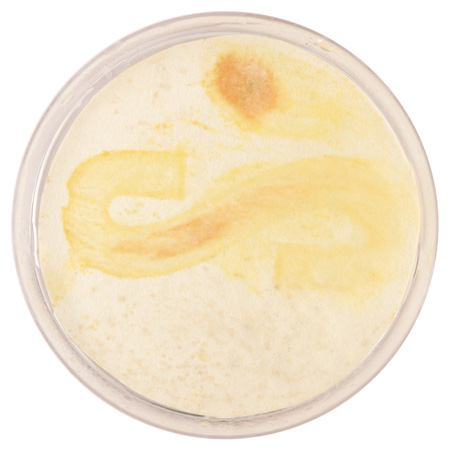
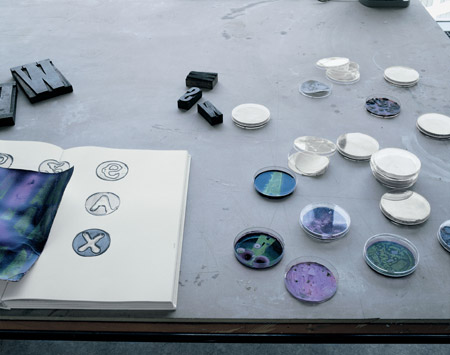
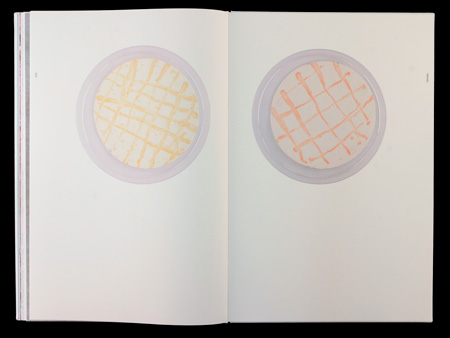
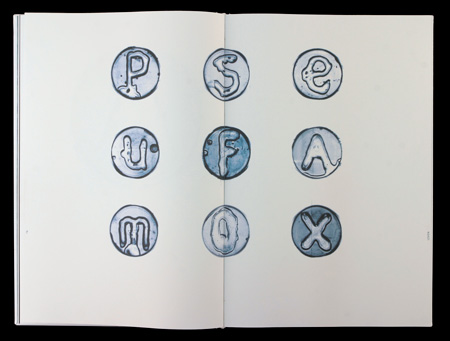
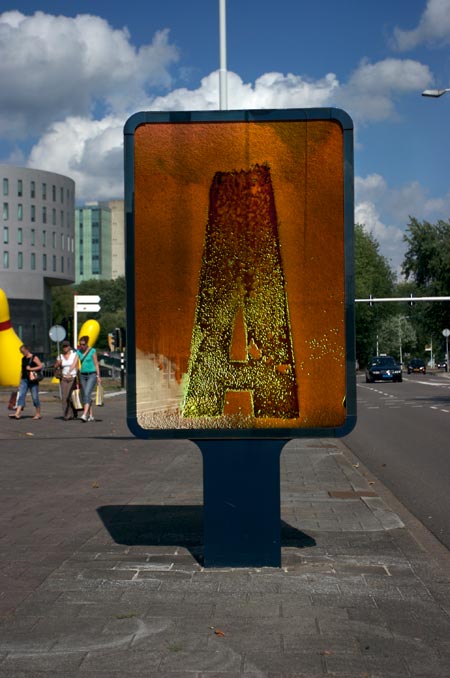
Symbiosis by Jelte van Abbema
| Exhibition at Fotomuseum Winterthur Presents a Young Generation of Artists |
 Aneta Greszykowska, 'Untitled Film Stills #13', 2006. |
CLEVELAND, OH.- Seems familiar? We are constantly bombarded by images and information – at school, at work, in newspapers and on the web. All of these stimuli carry a multitude of underlying codes. Day in and day out, we navigate our way, more or less successfully, through a torrent of texts and images, subtle advertising messages and hard facts, official instructions and personal messages. New and long-established media alike vie for our undivided attention. What we tend to overlook is the fact that we are increasingly subject to a second, media-dominated reality in which we are no longer directly involved.
The exhibition featuring works by Becky Beasley (GB), Thomas Galler (CH), Aneta Grzeszykowska (PL), Thomas Julier (CH), Anja Manfredi (A), Ryan McGinley (USA), Taiyo Onorato / Nico Krebs (CH/CH), Clunie Reid (GB) and Oliver Sieber (D) explores this densely woven tapestry of direct and indirect experience, of immediate and mediated seeing. It quietly flags up the relationships and juxtapositions that permeate our casual, everyday navigation of parallel worlds. The young generation of artists presented here draw their inspiration from found images and their own creative originality, mapping out new territory in contemporary art photography. In this context, the term Karaoke symbolises a certain pleasure in citing and trying out familiar patterns and styles. The karaoke machine invented in 1971 by Daisuke Inoue presents melodies and lyrics hesitantly at first and then with increasing confidence. In this popular, non-hierarchical form of entertainment, the serious and the light-hearted are never far apart. Singing along develops into individual interpretation and imitation develops into innovation.
Aneta Grzeszykowska (*1974), Anja Manfredi (*1978), Becky Beasley (*1975) and Thomas Julier (*1983) are keenly aware of the affinities between their own work and that of artists who broke with certain artistic dogma to win their own freedom. Cindy Sherman’s 70-part series 'Untitled Film Stills' remains one of the foremost landmarks in post-modern art around 1980 and is widely regarded as the epitome of a feminist take on media reality. Over a period of several months in 2005, Aneta Grzeszykowska painstakingly adapted each and every subject in this milestone of recent art history, which itself has become enshrined as part of the canon, presented in countless exhibitions, essays and papers. When Anja Manfredi looks back on the historic highlights of modern dance in the 1930s and reconstructs outstanding works from the period by the likes of Isadora Duncan or Anna Pavlova for her camera, what she creates is to be regarded – in much the same way as the visual appropriations of Aneta Grzeszykowska – as a new approach and a new enquiry from today’s viewpoint.
Becky Beasleys sculptural black-and-white photographs such as 'Peel' (Floor) and 'Peel' (Wall) possess a vitality reminiscent of the early lead performances of Richard Serra, in which molten metal was hurled at gallery walls. Beasley presents her compelling large-format works in similarly energetic configurations – at times in the form of unprotected, matt prints, and at other times aseptically sealed behind cold, green acrylic glass. Whereas 'Curtains I – III' featuring three almost identical curtains, takes as its theme the sometimes tortuously slow creative process of the composer Glenn Gould, Trap deploys extremely subtle references and associations in its visual tracing of the 1972 performance 'Untitled (Tea Party)' by conceptual artist Bas Jan Ader, who, like Beasley today, staged his work solely for the camera.
Thomas Julier forges a similar link to the conceptualists of the late sixties when he (either solo or in collaboration with Cédric Eisenring) collates his vast creative output in small, copied spiral notebooks. As a visual form of equal importance, for wall display, he creates works showing bleak urban architecture and ambiguous organic shapes that recall the typologies of Bernd and Hilla Becher, or the laconic cycles by Ed Ruscha and Sol LeWitt. Julier’s series explore existing works with a sense of detachment, levity and decisiveness that is thoroughly contemporary and at the same time leaves the historic sources of inspiration firmly in the past.
Thomas Galler (*1970) uses clear-cut search criteria to trawl the deluge of media images for visual and textual quotes, which he then arranges in new semantic configurations. He is fascinated by such concepts as death, violence and protest in diverse cultures and by the way that these are portrayed in almost identical images. In his compelling new 5-part video 'Week End' (IDF Series) the artist celebrates a new popular visual form on the internet. Thomas Galler has collated hundreds of snapshots of young Israeli female soldiers who have posed for the camera in their free time and posted the photos online. These pictures are well known from Viva and MTV video clips and are swapped thousands of times a day on mobile phones.
Unlike Thomas Galler, who tends to appropriate his visual sources without any further intervention or manipulation, Clunie Reid (*1971) adds her own slogans and polemical comments to the images she finds in a vast everyday archive of pictures and text fragments from all manner of media. The London artist creates a collage of marginal notes, headlines and illustrations from the tabloid press and scientific periodicals alike, producing an exciting visual array that she has combined in this exhibition to form the multi-part wall installation 'Take No Photographs', leave only ripples. In spite of the occasional undertone of cynicism, the resulting works never elevate themselves above life itself nor deny their roots.
Taiyo Onorato and Nico Krebs (*1979/*1979) take an approach that has obvious references to the history of photography, literature and music. On their road-trip through the United States, they found much that was already familiar – images which, in the course of the past century, have crystallised into the potent “Go West…” myth. 'The Great Unreal' is based on that myth, and yet it conveys a sense of today’s flawed America in search of a new identity.
Ryan McGinley (*1977) and Oliver Sieber (*1966) share an interest in the various forms of youth culture that seek to emulate the lifestyles of previous generations. Whereas figures in Ryan McGinley’s photographs seem to float freely in a powerful rush of color, Oliver Sieber deciphers the subtle codes and strata of meaning in the relatively small Japanese subculture of young people who like to dress in rockabilly, psychobilly, skinhead, mod or punk style. In its reference to what is actually a foreign culture, Oliver Sieber’s 'J_SUBS' tells of an idealistic world view that finds its points of reference in the past and lives them out in the present.
Exhibition at Fotomuseum Winterthur Presents a Young Generation of Artists
| Major Exhibition Devoted to 'The Torments of Passion: The Dark Side of Sexual Desire' | |||
 A cameraman shoots video of James White's portrait of Rachel Weisz from 2004 at the inauguration of the exhibit 'Tears of Eros' at Madrid's Thyssen-Bornemisza museum. Photo: EFE/Emilio Naranjo.
| |||
Tears of Eros
 Front cover
Front coverRowland Ricketts (textiles)
Marilyn Whitesell (digital prints)The Art of Lakescaping
Beauty
Genesis Breyer P-Orridge and the obliteration of Self
| LACMA Presents First Major Museum Showing of Indian Comics |
 Abishek Singh (India), 'Ravan, the Demon of Lanka,' Ramayan 3392 AD, Issue 5, 2006. Pencil, ink, and watercolor (?) on paper, 24 x 17 in. Liquid Comics, Bangalore, India. |
LOS ANGELES, CA. The Los Angeles County Museum of Art presents 'Heroes and Villains: The Battle for Good in India’s Comics,' an exhibition comprised of fifty-three paintings, works on paper, and vintage comic books, on view from October 17, 2009 through February 7, 2010. The exhibition examines the legacy of India’s divine heroes and heroines in contemporary South Asian culture through the comic book genre.
Indian comic book superheroes and their arch enemies are visualized from ancient archetypes that have long been depicted in traditional painting and sculpture, and are deeply ingrained in India’s historical imagination. In contemporary comic books, Indian gods and goddesses are modern-day superheroes, manifested on Earth to vanquish evil forces. Demons take the form of modern villains, raising havoc in today’s troubled times. Heroes and Villains, curated by Julie Romain and Tushara Bindu Gude, mines the history of the comic book in India from the 1960s through the present. It explores the evolution of early Indian comics, which were modeled on American superhero comics, through the Amar Chitra Katha (Immortal Picture Stories), a popular series based on traditional Indian epic literature and religious texts recounting the heroic deeds of Indian gods and goddesses.
“This is the first exhibition of Indian comics on view at a major museum,” said Romain. “Here at LACMA we have the unique opportunity to consider this contemporary art form in relation to our extensive historical collection of South and Southeast Asian art.”
Today, comic book production takes place in a global cultural context and within a multi-media framework that combines traditional hand-drawn illustrations with computer design and animation technology. The exhibition explores this process through a survey of Liquid Comics’ Devi and Ramayan series, which were inspired by heroic characters from the Mahabharata, Ramayana, and other Indian texts. Liquid Comics (formerly Virgin Comics) is an animation studio based in Bangalore.
To illustrate the continuity of the heroic narrative tradition in Indian art, a selection from LACMA’s historical collection of Indian paintings will also be on view. These include folios from Mughal illustrated manuscripts, paintings and drawings from the northern Indian princely states, and story-telling paintings from central India.
Indian Comics
| Palazzo Reale in Milan Holds Edward Hopper Retrospective |
 |
MILAN.- With his paintings, Hopper paid particular attention to geometrical design and the careful placement of human figures in proper balance with their environment. He was a slow and methodical artist; as he wrote, “It takes a long time for an idea to strike. Then I have to think about it for a long time. I don’t start painting until I have it all worked out in my mind. I’m all right when I get to the easel. He often made preparatory sketches to work out his carefully calculated compositions.In this photo: Edward Hopper in Paris drawing a sketch, 1907. The Arthayer R. Sanborn Hopper Collection Trust – 2005.
Edward Hopper Retrospective
Visual technology now saturates everyday life. Theories of the visual - now key to debates across cultural studies, social theory, art history, literary studies and philosophy - have interpreted this condition as the beginning of a dystopian future, of cultural decline, social disempowerment and political passivity. This book presents a wide-ranging critical reassessment of contemporary visual culture through an analysis of pivotal technological innovation from the telescope, through photography to film. A range of theorists - from Baudelaire to Merleau-Ponty, Debord, Benjamin, Virilio, Jameson, Baudrillard and Derrida - have explored how technology not only reinvents the visual but also changes the nature of culture itself. The heartland of all such cultural analysis has been the city, from Baudelaire's flaneur to Benjamin's Arcades. Drawing on the examples of Paris and New York - two key world cities since the 19th century - the book analyses how visual technology is revolutionising the landscape of modern thought, politics and culture.
The Architecture of the Visible » Treasureland of Heroturko
| Book/CD/Video Review: FEATURE FILM | |
CONLON/VERTIGO Book/CD/Video Review:
Review: The Film and the Book
Review: The CD
| Reviewer Ian Lace Film and book CD | |||
Feature Film: Douglas Gordon's vision of Bernard Herrmann's Vertigo